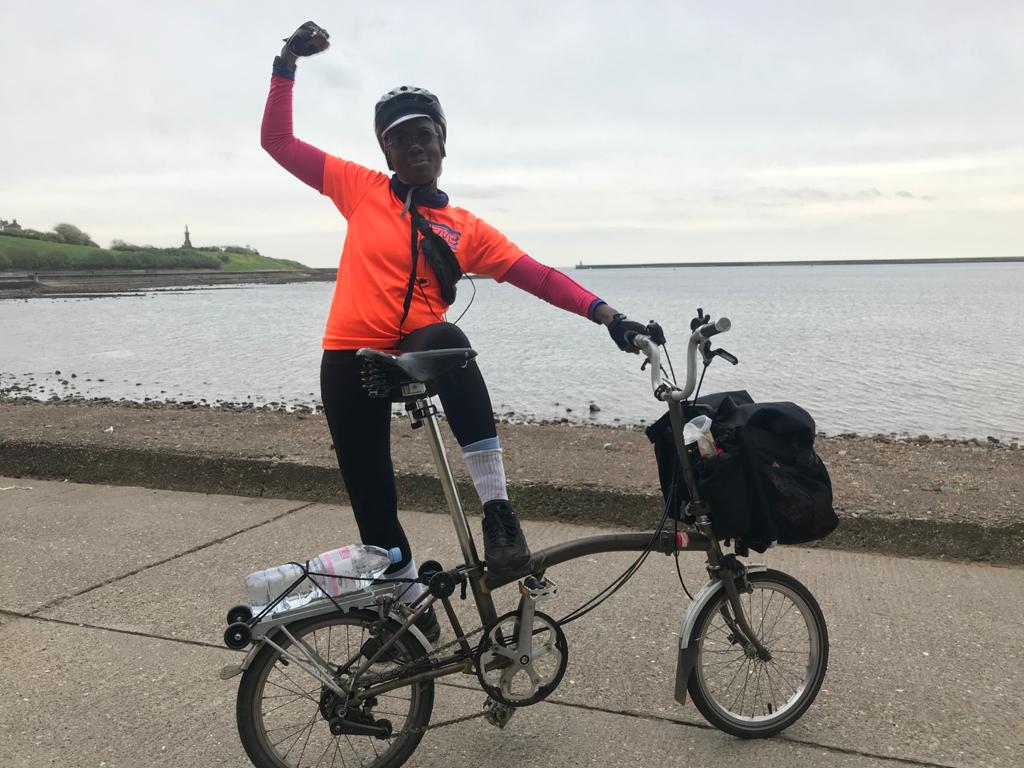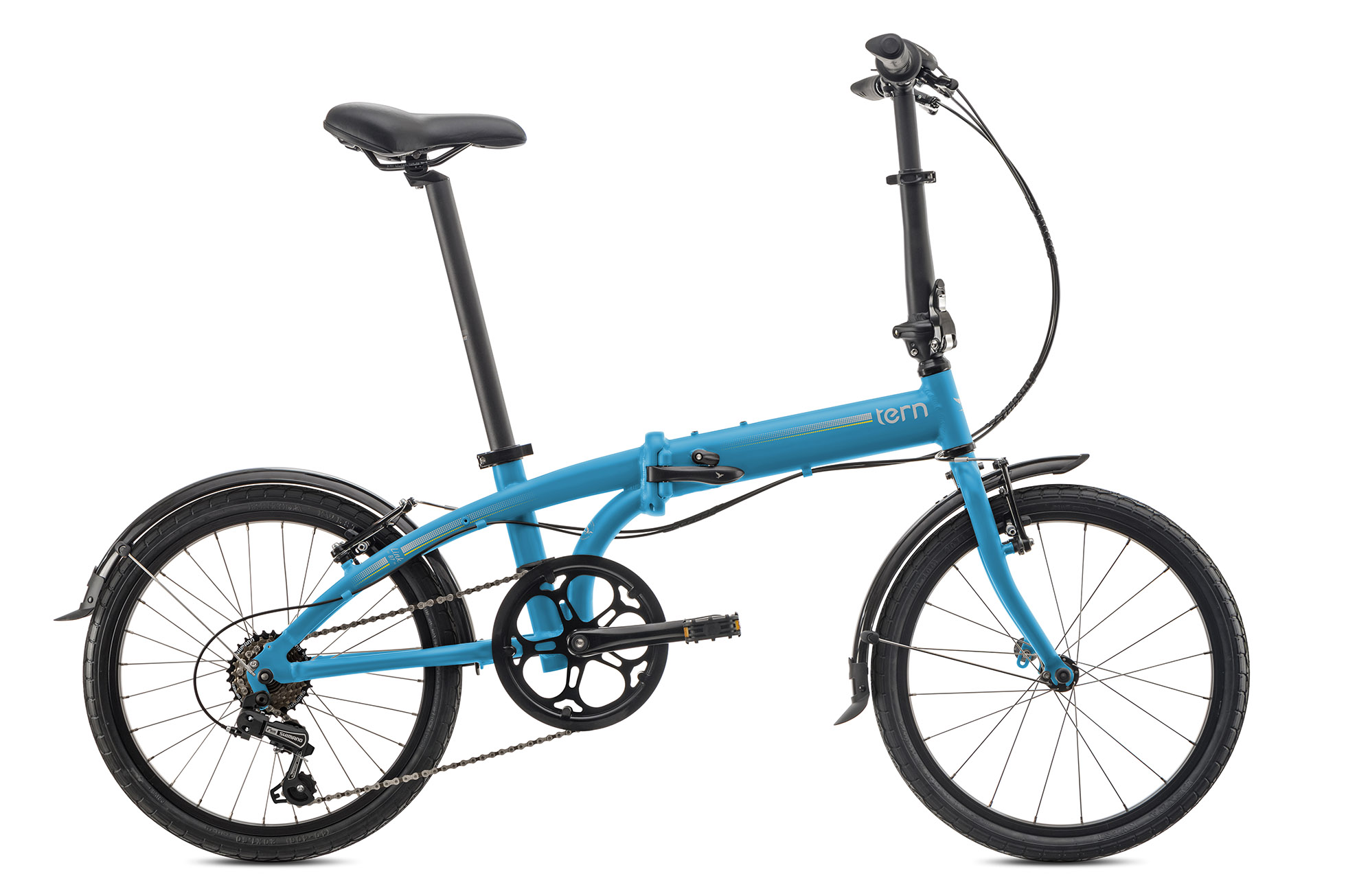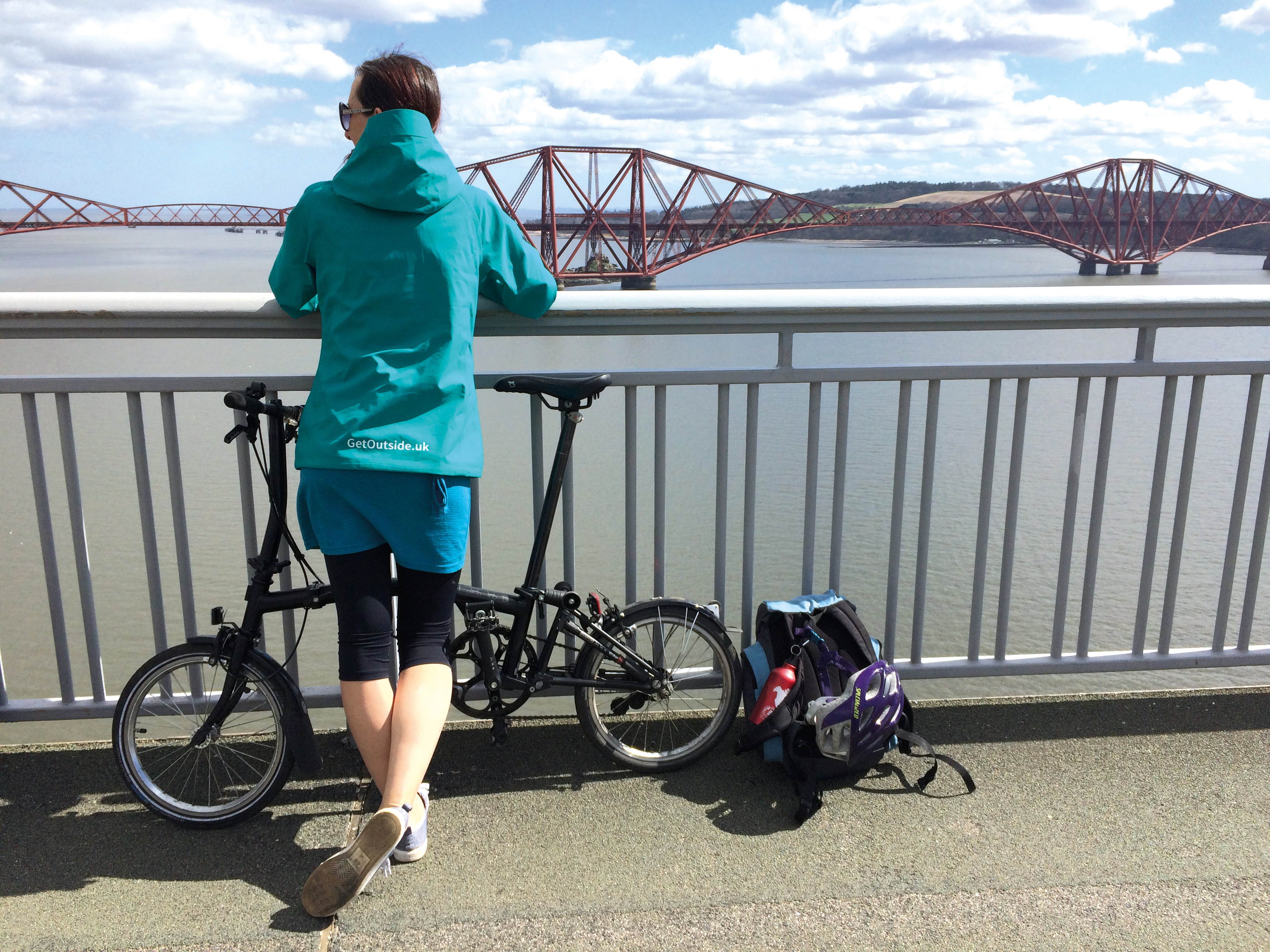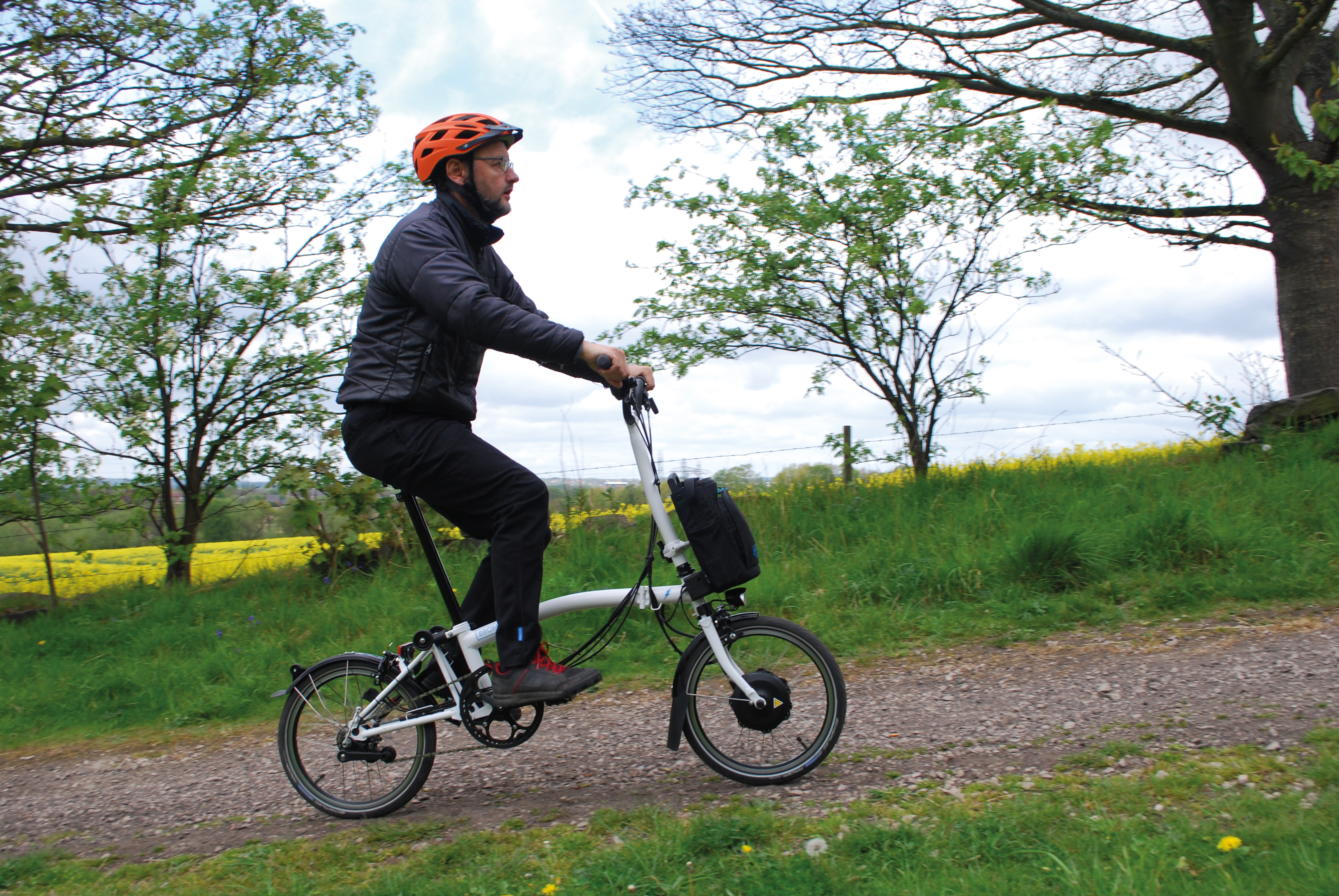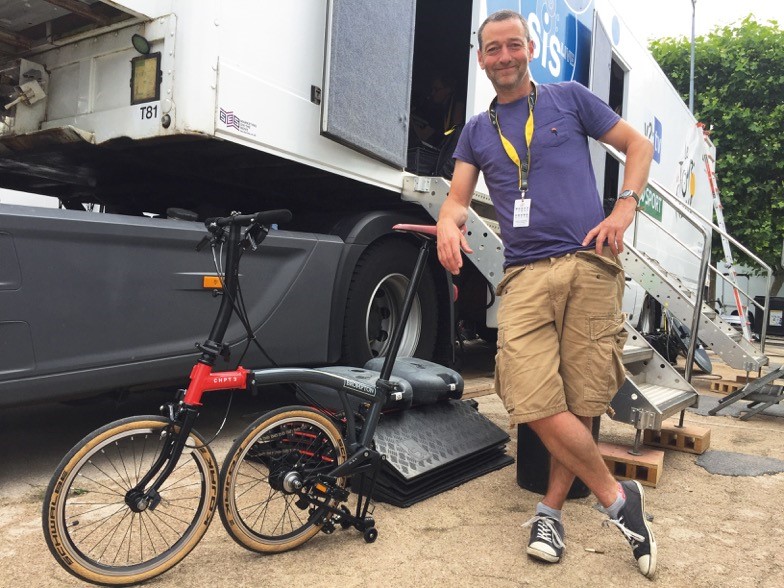Bike test: Compact folding bikes Birdy vs Brompton
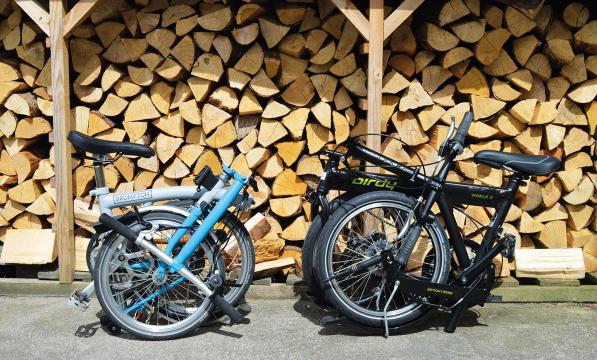
Trains, buses, car boots, boats, aeroplanes, offices, cloakrooms, hallways, studio flats – folding bikes go where others won’t fit or aren’t freely allowed. The smaller they pack down, the more loopholes they’ll slip through. For example, trains in the UK carry “compact, fully folding cycles with wheels up to 20" in diameter… without restriction”.
Two of the best compacts are the Brompton and the Birdy. Both cost from around £1,000, which is a lot more than an entry-level Dahon (rebadged or otherwise). Yet for long-term usage, it’s money well spent.
A compact folder enables you to integrate cycling into your everyday life so deeply that it may transform the way you think about transport. Moreover, the initial cost will be recouped in saved bus or taxi fares or petrol.
In its 40-year history, the Brompton has evolved from a bike-rail solution for the cognoscenti into a marketing-friendly, middle-class icon. It now exists in a variety of à la carte formats.
I picked a 2-speed partly because I’ve not used the Brompton derailleur before, but also because it saves about 600g over the 3-speed, and low weight is a big deal for a bike you’ll often hold in one hand. With mudguards, flat S-type handlebar, Schwalbe Kojak tyres, and the all-important front luggage block, it costs £970.
The German Birdy is even more premium priced than the Brompton; standard models start at £2,069. However, manufacturer Riese und Müller also offers a couple of ‘model-T Ford’ versions: the World Birdy Comfort (£1,439 with Nexus 8-speed hub, dynamo lights, and rear rack); and the £1,169 World Birdy Sport, which comes with 8-speed derailleur gearing and in any colour you like as long as it’s black.
(Note that in common with UK retailers, I’m transposing the name and calling this bike the Birdy World Sport.)
Frame and folding: Brompton
One of the reasons that the Brompton is so compact is that it doesn’t simply fold in half. The rear triangle pivots behind the bottom bracket, enabling the rear wheel to tuck underneath the main frame tube. The bike stays upright sitting on its haunches, so it can be parked like this.
In earlier models, there was nothing but your weight on the saddle stopping the rear end tucking under, which was an issue if you picked up the unfolded bike (or bunny hopped it…). Now there’s a catch to hold the rear triangle in place.
The top of the rear triangle has a rubber suspension bumper where it butts against the seat tube. There are two grades of suspension available: standard or firm. Unless you’re very light, pick firm. If it’s too soft, the suspension bobs through each crank revolution, robbing a little energy and making the bike wallow.
Tucking the rear wheel under is step one of the folding procedure. Step two, once you’ve ensured the left-hand crank points forward, is to undo the frame hinge and, holding the stem, lift the front end of the bike up and back; a catch on the left-hand fork blade hooks over the drive-side chain stay.
Step three is to undo the seatpost quick release, lower the seatpost, then refasten the quick release; the dropped seatpost locks the rear triangle into its folded position. Step four is to undo the stem hinge and let the stem and handlebar drop down; a nodule on the stem fits into a bracket on the fork crown, holding the stem and bar in place.
Finally, rotate the cranks backwards so that the right-hand pedal is next to the tyre, and then fold the left-hand pedal. You can now pick up the bike by the saddle nose or main frame tube, or on smooth surfaces roll it on its castors – something that’s easier with the handlebar left unfolded.
Written down, this sounds fairly involved. In practice, it becomes second nature and you’ll do it comfortably in 10-15 seconds. It takes about the same amount of time to unfold, despite the fact that the hinges aren’t self-locking.
With a standard seatpost, I’m fortuitously the ideal height (1.77m) and can just raise it to its maximum extension. As the test bike had the longer ‘extended’ seatpost, I had to faff with saddle height like everyone else, and I sorely missed the height markers of the Birdy’s seatpost.
The speed of folding/unfolding is useful for commuting, where you’ll be doing it multiple times on any mixed-mode journey. It also means you can avoid carrying the bike more than you absolutely have to. Better to push it along the platform, or drag it on its castors, than heft it.
At 11kg, the S2L is no heavyweight (in fact, it’s 1.4kg lighter than my old 3-speed Brompton), but it’s difficult to walk any distance with – and I say that as a fit and healthy, average-sized bloke. Slightly built owners will struggle. A shoulder strap would be a useful accessory.
The frame has fittings for mudguards, which don’t affect the fold, and dedicated racks front and rear. The front luggage system is excellent, with a choice of bags to fit the optional mount on the head tube. The Brompton rear rack is largely superfluous, mostly adding weight plus some stability to the folded bike. There aren’t any bottle mounts.
While the frame is a marvel of metallurgical origami, there are a couple of things I’d change. One is the fact that the rear mudguard sits on top the chain stay brace. Since this gets hosed with water, it eventually rusts away – unless you choose the ‘Superlight’ titanium option. The second thing is the fork offset: there’s too much. More on that later.

Frame and folding: Birdy
Unlike the Brompton, the Birdy is aluminium rather than steel and there’s no hinge in the main frame, so it can’t flex there. Stronger and heavier riders will appreciate this. Without a frame hinge, it can’t fold as compactly either, but the folding process is still ingenious.
First, you need to put it into top gear (otherwise the chain will fall off when you fold the bike). Second, level the cranks with the left one forward. Third, lift the front end off the ground, unclip the front wheel at its suspension elastomer, and then fold the wheel back on itself, rotating it around its own suspension pivots.
Fourth, unclip the rear wheel and tuck it under, similar to the Brompton. Fifth, lower the seatpost to lock the rear swing-arm in position. Finally, undo and fold down the handlebar.
The Birdy evidently holds the record for the fastest fold, at 4.9 seconds, but I’ve never got anywhere near this and it always took me longer to fold than the Brompton. It felt like more hassle too, perhaps due to a lack of familiarity. So I didn’t fold the Birdy when I didn’t have to. With the Brompton, it is no bother: you fold it without thinking.
I encountered a couple of snags folding the Birdy. The handlebar wouldn’t fold flush, as the grip overlapped the quick release lever. This might be solved by: narrower rear dropouts; removing the kickstand (you’ll need a spacer instead); and/or having Allen-headed wheel bolts instead of a quick release with a cam lever.
You also need to take care to keep the rear derailleur out of the front wheel when folding. There’s little space between them.
When it’s folded, the Birdy isn’t any harder to carry than the Brompton. It’s just bulkier. It will easily fit an end-of-carriage luggage rack, but getting it from one end of a busy train carriage to the other is awkward. I collided with knees, elbows, newspapers and tempers.
Unfolded, the Birdy benefits from elastomer suspension front and rear – 30mm and 40mm respectively. The rear is a bumper for the swing-arm, like the Brompton’s. The front is part of an unusual-looking leading link fork. This tracks well and doesn’t dive during braking. For my weight (65kg), the standard elastomers were fine. If I were to change them, I’d fit the firm ones but soft is also an option.
The World Sport comes with a kickstand (whose rubber foot fell off) and mudguards with sturdy stays. They need to be strong as the folded bike rests on these mudguards. A low-rider front rack and a cantilevered rear rack are available as extras, although I’d fit a large Carradice SQR block and a Super C Saddlebag instead. As with the Brompton, there are no bottle mounts.

Ride
The Brompton has very quick steering due to its tiny amount of trail. Some will characterise this as ‘nippy’, others ‘nervous’. With both hands on the handlebar, the handling is OK. Signalling requires concentration, especially when you’re descending or the road surface is rough.
If you use one of Brompton’s excellent front bags, the extra weight over the front wheel makes the steering less skittish, although even without a front bag it’s not so unusual that you can’t get used it. Yet I’m sure the handling could be much improved by reducing the fork’s offset to zero. This might necessitate other design tweaks to prevent compromising the fold.
The S-bar provides a sportier riding position than the M-bar I’m used to. I liked it. You end up with more weight on your hands, so for comfort I’d recommend bar ends (up to about 80-90mm won’t interfere with the fold) or flared, ergonomic grips; Ergon GP3 grips would address both issues. Schwalbe’s Kojak tyres are a good match for the S-bar, helping these small wheels hold their speed better.
Nippy around town is one thing; if you’re going further, the Brompton is seldom the best choice. While some owners tour on Bromptons, and I’ve done 50-mile rides on mine, single-digit mileages are what this bike does best. Consequently, I think fewer gears (and less weight to carry) is the better choice.
The Birdy rides less like a folder and more like a conventional bike. The handling is stable because it’s got more trail, so you can tackle descents and everyday manoeuvres with greater confidence. As the reach is roomier, you’ll feel less perched on it if you’re taller than average. The unusually high bottom bracket suits longer-legged riders too.
The simple elastomer suspension front and rear goes a long way to offsetting the issues that small wheels have compared to large ones. It removes the ‘chatter’ you get from anything other than a billiard table smooth road.
It’s more comfortable, since the bike absorbs small bumps before you do. It also improves the rolling performance, because the wheels flow over bumps rather than being buffeted or baulked by them.
I’d have no hesitation in doing all-day rides on a Birdy, with or without luggage. Like any bike with suspension you can’t lock out, it rides best if you sit and spin; riding it out of the saddle is like running on a trampoline.
Components
Convoluted cable runs can affect the braking performance of any folder that uses mechanical callipers. Happily, the Brompton’s long-reach sidepulls are better than they were in the past. They’re now dual pivots, fitted with decent Fibrax blocks, and the all-metal levers are less spongy. I had no problems scrubbing off speed.
The callipers lack quick releases, so you need to deflate the tyre to get the wheel out or in, which is odd.
The Birdy uses V-brakes, which are more powerful – just as well given the higher speeds you can comfortably reach on this bike. The pads aren’t perpendicular to the brake arms, particularly at the rear, so watch for uneven pad wear. Parallel-push V-brakes would be a solution but I’m not aware of anywhere you can get them, other than eBay.
The Brompton’s two-speed gearing is fine around town: you get one gear for starting off or climbing modest hills and another for cruising along. Both are a little high, so consider one of the gear reduction options (7% or 18%) at point of purchase.
The shifter, which indicates the gear with a + or a –, turns the Brompton chain tensioner into a derailleur by moving the top jockey wheel. It’s not as slick as Shimano, especially shifting against the spring (down), but it works OK.
The Birdy uses an 8-speed twistgrip and a Shimano Claris derailleur that’s unremarkable except for the long chain guide projecting from the bottom. This is for the loose chain to hang on when the rear wheel tucks under. Claris will cope with a 32 sprocket, so it’s a shame an 11-30 cassette is fitted.
Bottom gear is a bit high for the day rides or tours this bike is capable of. I’d be tempted to try an 11-34 cassette, using a longer B-screw to nudge the derailleur away from this bigger cassette.
Small wheels need efficient tyres to roll as well as big ones, and both these bikes have them. The Birdy has Schwalbe Marathon Racer tyres, which are a big improvement from the stodgy Impac Streetpacs that I criticised the World Sport for last time I tested one.
The Brompton, meanwhile, has Schwalbe Kojak tyres because I asked for them. You can choose between Kojaks, Schwalbe Marathons and Brompton Kevlar tyres when you use Brompton’s online ‘bike builder’.
The Birdy rides less like a folder and more like a conventional bike… I’d not hesitate to do all-day rides on it. I didn’t fold the Birdy when I didn’t have to. With the Brompton, it is no bother: you fold it without thinking
Dan Joyce, Cycle magazine editor
Verdict
It boils down to what you want most: a fantastic folder that rides OK, or a small-wheeler that rides really well and folds OK. The Brompton is the better mixed-mode commuter because of its more compact fold, whereas the Birdy’s superior ride makes it the better choice for mixed-mode journeys you want to enjoy, such as touring and leisure riding.
The Birdy is arguably more versatile too, being a more capable commuter than the Brompton is a tourer. But versatility isn’t everything.
The Brompton fills one role exceptionally well: short-distance utility transport that blends into the background when you don’t need it as a bike. That’s all I really need a folder for, so I’ll probably replace my 16-year-old Brompton with a newer version when the time comes.
Your mileage, as ever, may vary. If you have the chance to test ride and test fold both bikes, take it.









